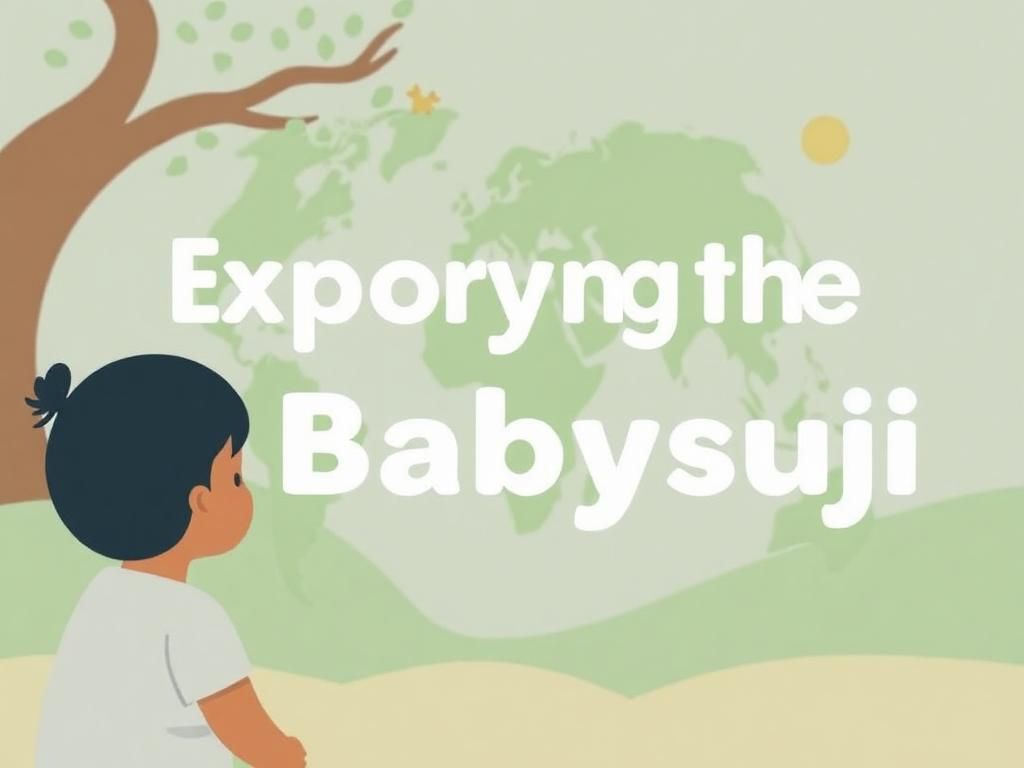Babysuji is a concept that has gained substantial attention in recent years, particularly among educators and caregivers. It refers to the practices and methods used to foster a nurturing environment for children, aimed at enhancing their cognitive, emotional, and physical development. Globally, babysuji is interpreted differently, reflecting diverse cultural philosophies and values.
In the context of babysuji, the significance of early childhood development cannot be overstated. Effective application of babysuji strategies promotes early education, helping children develop essential social skills and emotional intelligence. For caregivers and parents, understanding babysuji not only equips them with tools to assist their children’s growth but also helps in the formation of strong family bonds.
Origins and History of Babysuji
Historical Background
Tracing the origins of babysuji reveals a rich tapestry interwoven with various cultural practices. Historically, many societies placed great importance on the developmental stages of children, with babysuji practices often embedded in tradition. In many Eastern cultures, for example, the focus on community and extended family involvement has shaped babysuji concepts over generations. In contrast, Western styles evolved with a heightened emphasis on structured and individual learning.
Evolution Over Time
As societies have changed, so too have babysuji practices. The industrial revolution and urbanization brought significant shifts, often prioritizing professional commitments over traditional parenting practices. These societal transitions influenced how babysuji is understood today, highlighting the need for adaptive strategies to meet the challenges of modern family life.
The Concept of Babysuji in Modern Society
Contemporary Practices
In today’s fast-paced world, adapting babysuji incorporates modern methodologies and technologies. Caregivers can engage children using current methods such as interactive activities and resourceful online platforms. Educational apps and online courses have emerged, empowering parents with knowledge on how to implement effective babysuji techniques at home.
The Role of Babysuji in Different Cultures
One cannot ignore the differences in how babysuji is perceived internationally. In Eastern cultures, strong familial ties and collective learning are prevalent, emphasizing community-driven babysuji. Conversely, Western methods may often focus on individual achievement and structured programs. This disparity highlights the adaptability required in understanding the needs and resources of different communities.
Benefits of Implementing Babysuji
Cognitive Development
Implementing babysuji effectively can significantly enhance a child’s cognitive abilities. Early educational interventions encourage critical thinking and problem-solving skills. Creative play—an essential component of babysuji—stimulates mental growth, nurturing children’s learning and comprehension skills.
Emotional and Social Development
Another profound impact of babysuji is in fostering emotional and social development. Engaging children in collaborative scenarios boosts their confidence and self-esteem. Group activities, a core element of babysuji, teach essential skills such as empathy and collaboration, preparing children for future social interactions.
Physical Development
Physical development also plays a vital role in babysuji. Activities designed to improve motor skills and coordination are crucial at developing healthy habits. Play not only promotes overall wellness but also encourages children to express themselves physically, an often-overlooked aspect of child development.
Challenges Associated with Babysuji
Misinterpretations and Misapplications
As with any educational concept, misinterpretations of babysuji can lead to unfounded practices. Common misconceptions may result in parents implementing babysuji strategies that don’t align well with their children’s needs, highlighting the importance of being educated on effective approaches.
Cultural Barriers
Cultural sensitivity is paramount when discussing babysuji. Differences in access to resources and educational philosophies can create barriers to implementing effective strategies. Ensuring that babysuji practices respect cultural beliefs while promoting inclusivity is essential for success.
Parent and Caregiver Exhaustion
The pressure on parents to implement babysuji adequately can lead to burnout. Balancing professional demands with personal commitments often leaves little room for focused engagement in children’s development. Addressing this issue means fostering a supportive atmosphere for parents as well.
Best Practices for Incorporating Babysuji
Strategies for Parents and Caregivers
Parents and caregivers can enhance the application of babysuji at home using practical tips. For instance, creating a designated play area, engaging in imaginative play, and encouraging spontaneous creativity can significantly contribute to a child’s development. Establishing routines that incorporate play into daily activities can seamlessly integrate babysuji into family life.
Community Involvement
Local organizations play a critical role in promoting babysuji practices. By participating in community programs, parents can access resources and support networks to share experiences and knowledge. Aligning with other parents and professionals provides a unified front in promoting the principles of babysuji.
Resources and Tools
Abundant resources exist for parents and caregivers seeking to deepen their understanding of babysuji. Recommended books such as “The Whole-Brain Child” by Daniel J. Siegel and Tina Payne Bryson provide insights on child development through the principles of babysuji. Online platforms, like [Zero to Three](https://www.zerotothree.org), offer valuable courses and articles on best practices in early childhood development.
Conclusion
Recap of Key Points
The exploration of babysuji highlights its multifaceted nature, underscoring both benefits and challenges. From cognitive and emotional gains to potential misapplications, understanding babysuji is crucial for caregivers and parents alike. Awareness and cultural sensitivity in babysuji practices foster a more inclusive approach to child development.
Future Prospects for Babysuji
As society evolves, so will the concepts surrounding babysuji. Future trends may see a blend of traditional practices with modern technological solutions, offering innovative ways to support child growth. Parents and caregivers are encouraged to remain engaged and adaptive, embracing the holistic approach of babysuji for the benefit of their children.
Additional Resources
Suggested Reading and Further Learning
For those interested in learning more about babysuji, consider exploring the following resources:
- “The Montessori Method” by Maria Montessori
- “Raising An Emotionally Intelligent Child” by John Gottman
- Websites like [National Association for the Education of Young Children](https://www.naeyc.org) offer valuable resources.
Professional Organizations
Organizations focusing on childcare and babysuji practices include the National Association for Education of Young Children (NAEYC) and Zero to Three, which provide resources and advocacy for early childhood development.
Frequently Asked Questions (FAQs)
Common Questions About Babysuji
- What is babysuji? Babysuji refers to practices designed to promote child development through nurturing environments.
- How can babysuji benefit my child? It enhances cognitive, emotional, and physical development.
- Are there cultural differences in babysuji practices? Yes, babysuji varies globally, reflecting distinct cultural values.
- What resources can I utilize for babysuji? Consider seeking books, online courses, and community programs focused on early childhood education.
- Can babysuji be adapted for modern technology? Absolutely! Many current resources integrate technology to engage children effectively.
- How do I avoid misconceptions about babysuji? Educate yourself through credible resources and participate in community discussions.
- What can I do if I feel overwhelmed implementing babysuji? Build a support network and connect with other parents to share experiences and advice.
- Is it important for babysuji to consider cultural sensitivity? Yes, acknowledging cultural beliefs ensures inclusivity and relevance in babysuji practices.
- How can I get involved in promoting babysuji? Participation in local programs and parenting groups can create a supportive community for sharing knowledge.
| Aspect of Babysuji | Benefits | Challenges |
|---|---|---|
| Cognitive Development | Enhanced learning capabilities | Misinterpretations of teaching methods |
| Emotional Development | Increased confidence and empathy | Cultural barriers in understanding |
| Physical Development | Improved motor skills | Access to resources for physical play |
This comprehensive guide aims to shed light on the multifaceted nature of babysuji. By understanding its origins, benefits, cultural contexts, and challenges, parents and caregivers can better support the developmental needs of children today and in the future.


